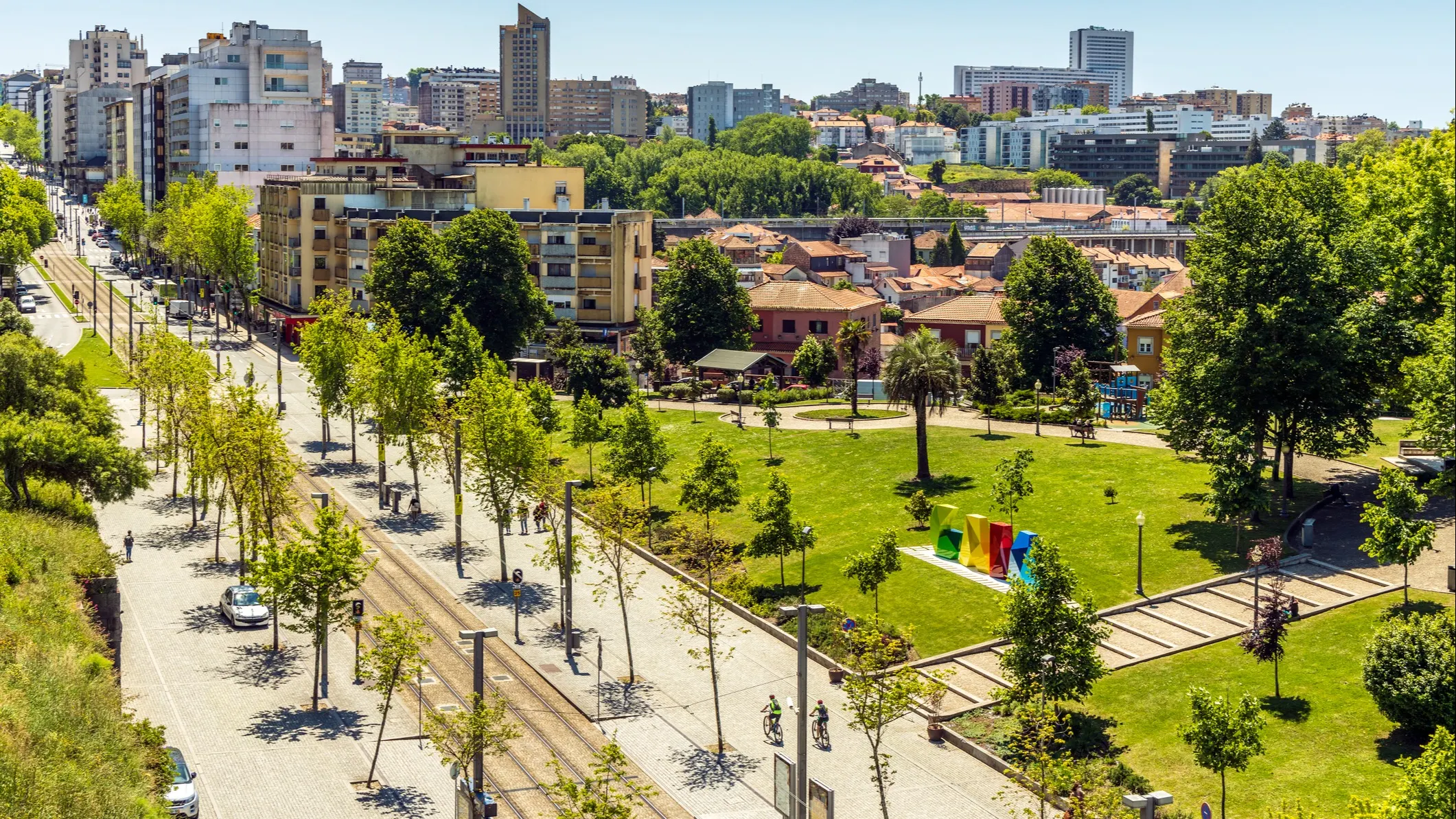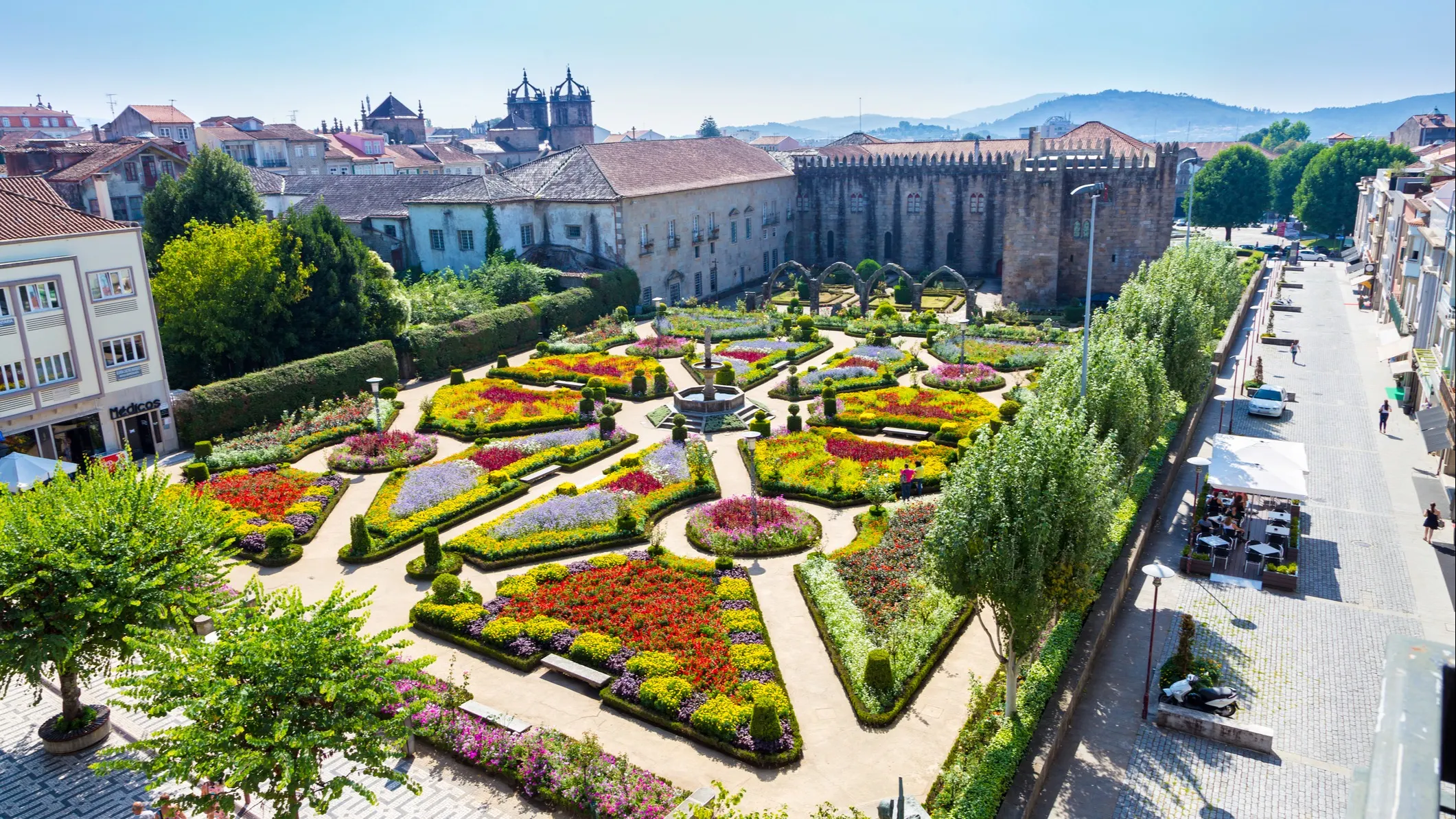Drive just 13 minutes from downtown Porto—the largest city in northern Portugal—and you’ll reach the point where the Douro River enters the Atlantic. It’s a majestic sight.
Right beside the river mouth lies a stunning curve of Atlantic beach. Stroll less than half a mile to the end of the beach and you’ll reach the point where the river and ocean meet, the ocean swells rippling against the seawall that protects the narrow mouth of the Douro.
This is the starting point of 16 miles of spectacular, golden-sand Atlantic beaches that run along the coast south of Porto. Yet relatively few foreign tourists ever visit this area. A few years back, I described it as "Porto’s best-kept secret."
Now, it feels like word could soon get out.
Get Your Free Portugal Report Today!
Get Your Free Portugal Report Today!
Discover more about real estate and rental opportunities in Portugal and info on other European countries in our daily postcard e-letter. Simply enter your email address below and we’ll send you a FREE REPORT – Explore the Old World in Laidback Portugal.

By submitting your email address, you will receive a free subscription to IL Postcards and special offers from International Living and our affiliates. You can unsubscribe at any time, and we encourage you to read more about our Privacy Policy.
I’ve been scouting Portugal since 2002. I’ve spent many years heading down to the country’s popular southern Algarve region in search of opportunities for my Real Estate Trend Alert group. And our RETA deals in the Algarve have played out remarkably well, with uplifts of €220,000…€375,000… even as much as €1.3 million for one RETA buyer there. But the buying moment has passed there… for now at least.
As the Algarve got busier, people began looking for quieter havens in Portugal away from the madding crowds. I was one of them. A few years back, I bought my condo on Portugal’s Silver Coast, a roughly 90-mile stretch of Atlantic coast between Lisbon and Porto. Go back several years, and this stunning coast was little known outside of Portugal. Now, the resale market there is going from strength to strength. My condo cost me €300,000. Recently, a local real estate agent wanted to list it for €450,000.
The Silver Coast has been discovered. Which leads to a question, "Where will the people go next in Portugal?" To me, the answer is clear. They’ll go north. In northern Portugal, you’ll find the same incredible food, the same stunning soft-sand beaches, the same rich history and culture—all the quintessential elements that make Portugal so appealing.
And that includes the weather. The temperature generally hovers between 60 and 80 F for most of the year in the north. This is an environment with amazing appeal as we see a shift in preferences toward more temperate climates.
And yet, head to the right markets in northern Portugal and it’s like stepping in a time machine in terms of real estate prices—as though the global real estate boom of the last three years never happened. This all shapes up to be an incredible real estate opportunity.
To get ahead, I scouted the north of the country several times this year. And recently I asked one of my real estate scouts, Ciaran Madden, to follow up on these visits.
He scouted two destinations with big potential in northern Portugal, including the 2,000-year-old city of Braga and the mesmerizing coast just south of Porto…
Porto’s Sister City

Travel south over one of the six bridges crossing the Douro River at Porto and you’re in its sister city: Vila Nova de Gaia.
While Porto occupies the north bank of the Douro, Vila Nova de Gaia sits on the south. Although the two form part of the same urban area, Gaia has long been the junior partner in this relationship. The real estate market in the two cities reflects this.
On the Porto side of the river mouth, where the Douro meets the Atlantic, you’ll find the beachfront community of Foz do Douro. Foz is a popular tourist spot; it’s also Porto’s chicest neighborhood. Real estate prices there are Porto’s highest.
Expect to pay €500,000 or more for an ocean-view condo. By comparison, the coast of Gaia, less than a third of a mile across the narrow mouth of the Douro, has remained hidden. Gaia has those 16 miles of spectacular Atlantic beaches and a boardwalk lined with trendy cafés and restaurants that runs alongside most of them. But few foreign visitors know they exist, or how close they are to central Porto.
Now, however, big things are happening in Gaia."New communities and a hotel are flying up on the site of a former cod-processing plant on an elevated piece of land," reported Ciaran. "These will offer the most breathtaking river/ocean views, equal or superior to anything on offer in Foz. Two-bed, ocean-view condos in these communities list for €390,000. A few blocks further back from the coast, you’ll find two-beds listed pre-construction in the €275,000 range."
And new construction is by no means limited to that parcel of land at the mouth of the Douro. Drive south along the coast, between the suburbs of Gaia and the Atlantic, and cranes are a regular fixture. And inland, in central Gaia, an Israeli company is spending €150 million to build the 28-story Skyline hotel and residential tower, which will reportedly be the tallest building in Portugal."
There’s a lot of new activity in Gaia. That makes sense when you consider trends in Porto. You can spend many happy hours wandering Porto’s steep, cobblestoned streets, or lounging with a coffee on its historic Ribeira waterfront. But the city’s gentrification story has now all but played out. Prices are reportedly up 61% since just 2019.
Gaia, on the other hand, still holds potential. I’m hugely positive on the new communities on the site of the former cod-processing plant. This is a truly privileged position, offering out-of-this-world views. I believe ocean/riverview condos in these communities will be excellent investments and see strong capital appreciation.
Does that mean prices will skyrocket in value along the rest of Gaia’s coast? Not necessarily. While prices have risen in Gaia, we’ve not seen anything like the pace of increases in Porto. For values to rise all along the coast of Gaia, there needs to be a driver. For example, it begins to attract tourists or digital nomads
It’s still an open question as to whether vacationers and the digital nomad crowd will come to Gaia. I see a lot of potential, but there are a few downsides. The winter weather there can be dreary—wet, cool, and overcast. I’m going to keep a close eye on this market to see whether people start coming in the numbers required. But in the interim, if you are looking to spend time in a European beach-city destination, Vila Nova de Gaia should be on your radar.
The "Next Porto"

Braga, a 45-minute drive northeast of Porto, is a place of contradictions.
It’s one of Portugal’s oldest cities, founded in the Roman era. It’s also a major religious center, famed for its dozens of churches in Romanesque, baroque, and neoclassical architectural styles.
And yet, despite this abundance of history and religious traditions, Braga is a youthful university town and major economic center. Trendy bars and restaurants occupy many of its centuries-old buildings.
"Across the street from my Airbnb in the historic city of Braga was a trendy tapas bar that hosted techno nights. Next door was a store selling priests’ vestments and two-foot statues of the Virgin Mary," says Ciaran. "That’s Braga in a nutshell."
Factor in the city’s Mediterranean climate and its flat, walkable Old Town, and the result is a place that’s both livable and distinct. This makes it extremely appealing for retirees, full-time remote workers, and tourists on city breaks who want to escape the crowds that descend on Porto and Lisbon.
Braga is sometimes called "the next Porto," the implication being that the city is the next target in Portugal’s relentless wave of gentrification.
As Ciaran found, "Gentrification is certainly coming to this city, as it came to Lisbon and Porto. Cranes hover in the skies. And just like Porto, you’ll find buildings undergoing restoration work on virtually every street in its historic center. But the pace in Braga is calmer and gentler."
Still, prices here are notably cheaper than in nearby Porto. In Porto, small condos in rejuvenated historic buildings can list in the mid- to- high-€5,000-per-square-meter range. In Braga, you’ll find new studios in the historic center for less than €200,000. Ciaran came across one for €165,000. That’s about €2,800 per square meter (or €260 per square foot).
A good opportunity here would be to buy a historic home and convert it into one or more short-term rentals or several apartments. However, the issue is there are so few of these historic buildings on the market. Ciaran saw virtually none during his scouting trip. He says, "That feels strange, since they are still plenty of buildings around the historic center in significant need of repair. It feels likely that investors have tracked the trends in Porto and Lisbon and are holding in anticipation of Braga’s continued growth."
That’s smart. I predict that growth will come. Historic Porto is maxed out. Braga offers the perfect alternative. It’s got the food, the weather, a booming economy, and all that immense history and culture.
I’m extremely confident on the future of this incredible historic city. Demand for real estate here will increase and values will continue to rise as a result. In fact, I predict values will soar.
A Run of Killer Deals in Portugal
The RETA track record in Portugal is phenomenal. Here’s a small sample of the incredible uplifts RETA members have seen on our deals in the Algarve…
In 2020, I recommended condos in a community called Adega in Lagos. One RETA member bought a condo there for €480,000. She has since sold it for around €700,000. That’s an incredible gain of €220,000.
Another Adega condo was bought by a RETA member for around €500,000. They put it up on the market last year and immediately got an offer of €875,000—a €375,000 uplift.
One RETA member bought a penthouse in a Lagos community I recommended in August 2019 for €495,000. Just over three years later, in October 2022, she sold for €795,000. That’s a gain of €300,000.
In 2021 a RETA member bought a penthouse condo in the community of Dona Maria II, for €1.1 million. It was later listed for €2.4 million, a phenomenal uplift.
Get Your Free Portugal Report Today!
Get Your Free Portugal Report Today!
Discover more about real estate and rental opportunities in Portugal and info on other European countries in our daily postcard e-letter. Simply enter your email address below and we’ll send you a FREE REPORT – Explore the Old World in Laidback Portugal.

By submitting your email address, you will receive a free subscription to IL Postcards and special offers from International Living and our affiliates. You can unsubscribe at any time, and we encourage you to read more about our Privacy Policy.
